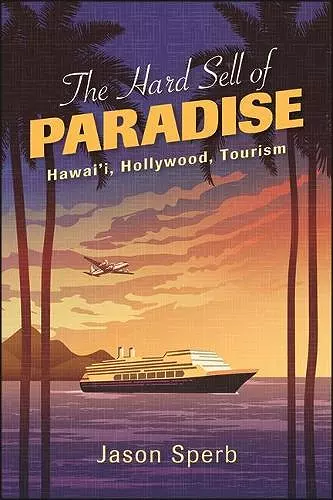The Hard Sell of Paradise
Hawai'i, Hollywood, Tourism
Format:Hardback
Publisher:State University of New York Press
Published:1st Mar '22
Should be back in stock very soon
This hardback is available in another edition too:
- Paperback£27.00(9781438487748)

Traces the complex and contradictory representations of Hawai'i in popular film and television programs from the 1930s to the 1970s.
The Hard Sell of Paradise examines how mid-twentieth-century Hollywood, negotiating the rhetoric of the tourism industry, offered a complex and contradictory vision of "Hawai'i" for its audiences. From the classic studio system and elite tourism of the 1930s to a postwar era of mass travel, TV, and new leisure markets, the book explores how an eclectic group of populist media reflected the language of tourism not only through its narratives of leisure, but also through its complex engagement with larger cultural and historical questions, such as colonialism, world war, and statehood. Drawing on rare archival research, The Hard Sell of Paradise also explores the valuable role that tourism partners such as United Airlines, Matson Cruise Lines, and the Hawaii Tourist Bureau played in directly and indirectly influencing such films and television shows as Waikiki Wedding, Diamond Head, Blue Hawaii, The Endless Summer, and Hawaii Five-O.
"The author mines rich archival materials and also builds on relevant scholarship … A good resource for those interested in popular culture, tourism studies, and Pacific and Oceanian history as well as film studies." — CHOICE
"This is a scrupulously researched historical analysis of the representation of Hawai'i in popular cinema and media. Weaving a compelling narrative about Hawai'i's history as well as its function and transformations within the national imagination, Jason Sperb demonstrates how colonialism, national interest, and the culture and tourism industries have underwritten Hawaiian iconography and myth—and how these myths operate to superficially resolve and allegorize the thorny contradictions of modern Hawaiian history. A particular strength is the book's thoroughgoing attendance to class dynamics and labor history and their relation to the production of racial ideologies." — Nathan Holmes, author of Welcome to Fear City: Crime Film, Crisis, and the Urban Imagination
ISBN: 9781438487731
Dimensions: unknown
Weight: 585g
360 pages